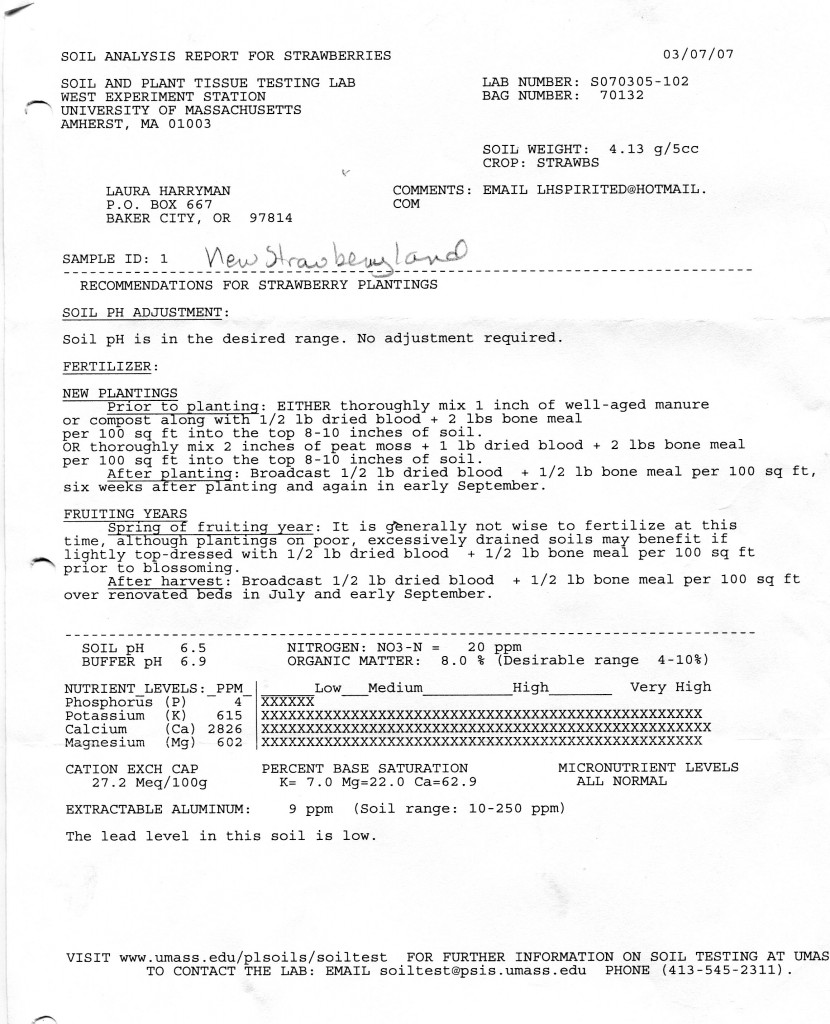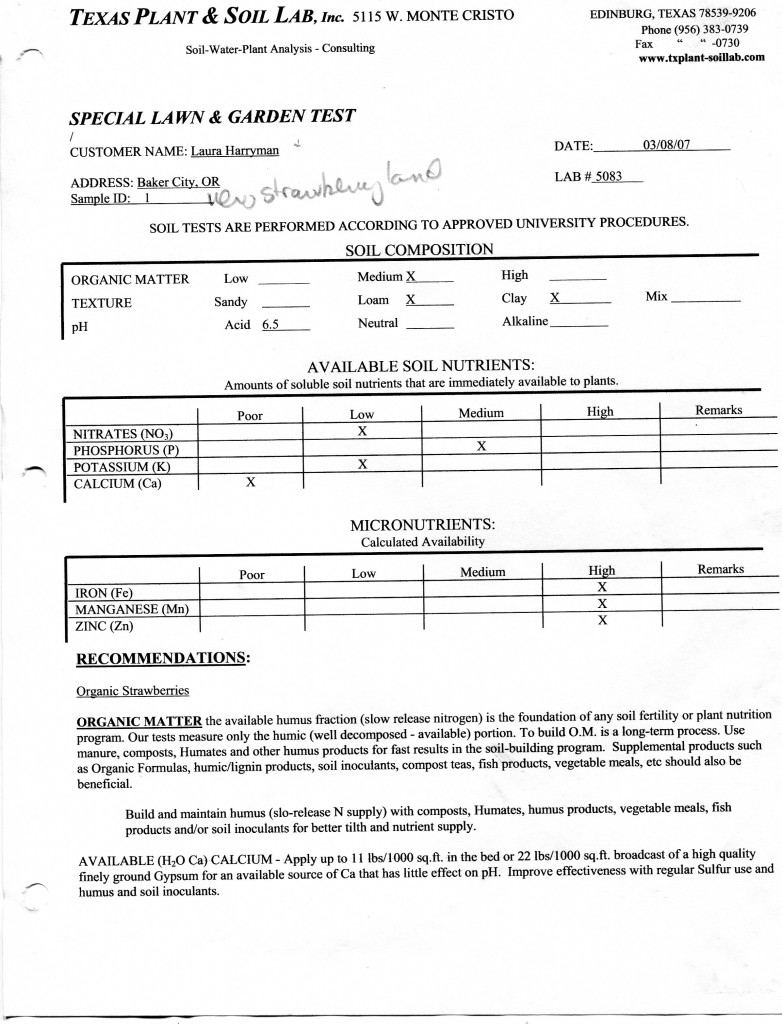Soil Testing
It is often recommended that home gardeners have their soil tested to determine the pH and nutrients present (or lacking) in the soil. Then there are others who will tell you not to bother and that is not necessary for home gardeners.
It is beneficial to analyze your soil at least once to determine the general composition of your soil.
Routine soil testing may not be needed. If you build up and amend your soil with good quantities of compost and organic matter, virtually all plant nutrients, both macro and micro, will be present in sufficient quantities. Replenishing organic matter will ensure ongoing plant health.
Observe your plants and learn to diagnose any plant deficiencies by the vigor (or lack thereof) and looks of your leaves. Mineral deficiency photos for color photos (scroll down to the bottom of the page.)
Click here for a list of soil testing labs and instructions for collecting soil samples. The document was created for Oregon, but the resources will work for everyone.
At-home test
Linked here is a soil test kit that will provide similar tests as a lab, if you’d like an alternative to the lab’s cost and you’d like faster results. It’ll give you a basic idea of what’s going on in your garden. It’s not extremely precise, but it’s reliable and it will definitely tell you if there is something askew in your garden. It doesn’t give you an exact numbers, but will indicated if you’re low on a nutrient. Then you can amend the soil and a few days later it test again and observe your healthier plants.
The product gives you four vials, one for soil pH, and one each for Nitrogen (N), Phosphorus (P) and Potassium (K). Essentially, you place the directed amount of soil/water mixture into each vial, and add the contents of the corresponding color-coded capsule. The capsules look like pills, the type you can pull apart and the contents spill out. After you empty the capsule into the vial, you place the rubber cap on the vial, shake and let it sit for the specified amount of time. All the quantities and times are clearly listed in the manual. Each vial has a color chart that is near your soil sample window which allows you to compare the color to the chart. This is how you know where your soil stands as far as pH, N, P and K.
If you just want to make sure everything is generally good in your garden, this test will probably suit you just fine.
My test
I’ve had my soil tested by a lab once. I was curious as to the composition of my soil. I was also curious as to how accurate the test would be. I decided to send my soil samples to two different labs to see if my results were the same. The reports below were from one soil sample. It was soil in which I was planning to plant 1000 strawberry plants. (They are doing great in this soil by the way.)
While both labs tested the pH at the same level of 6.5, there were discrepancies in other findings. The widest discrepancy was in the calcium level. One lab found it to be poor and one lab said it was very high.
You can use this information to decide whether soil test is worth its time and expense.






